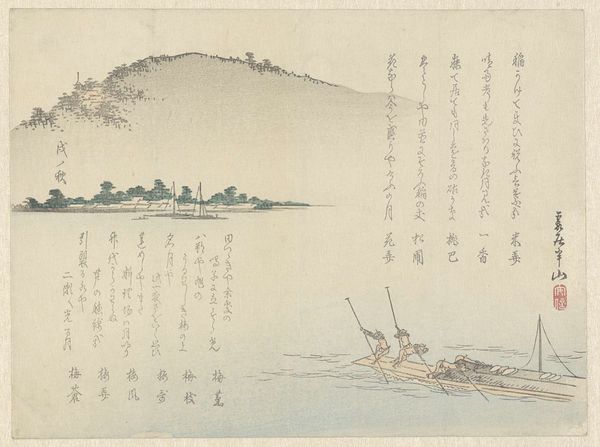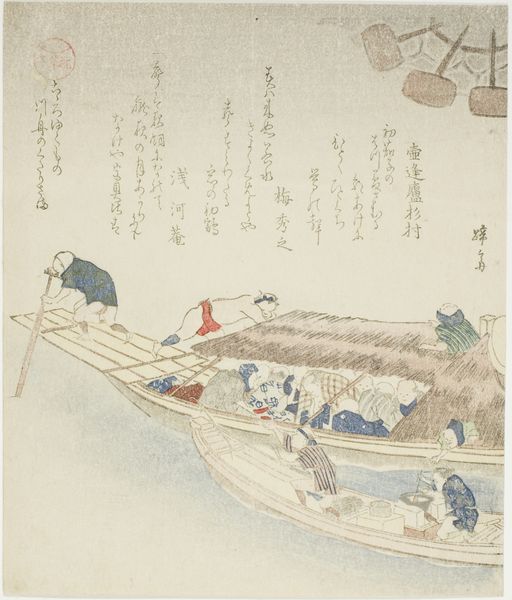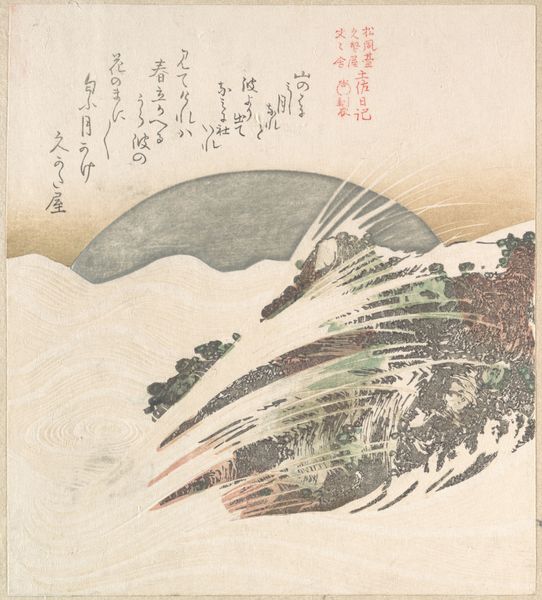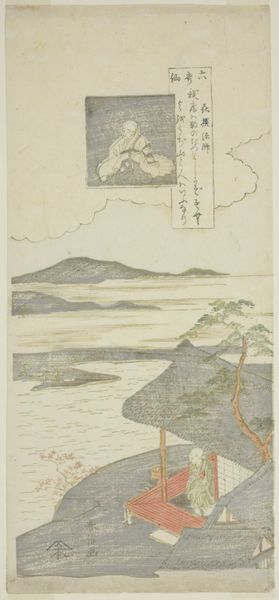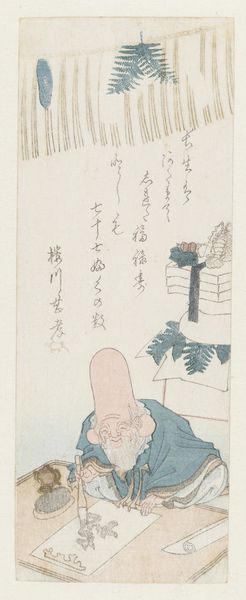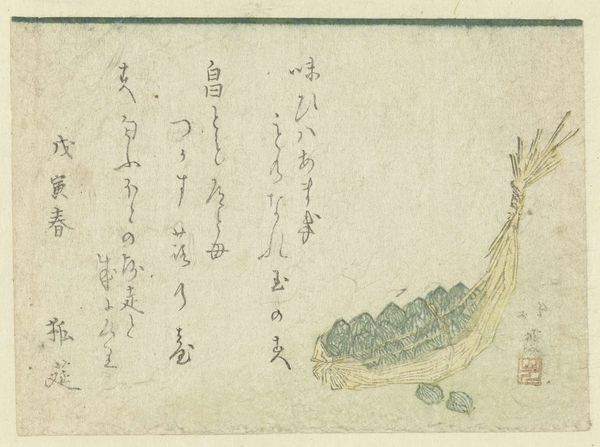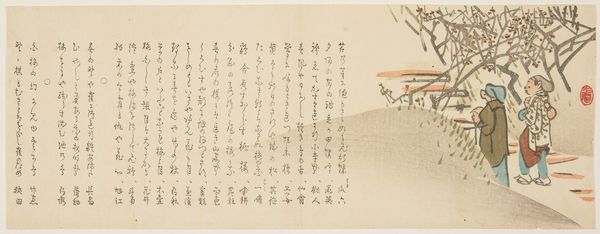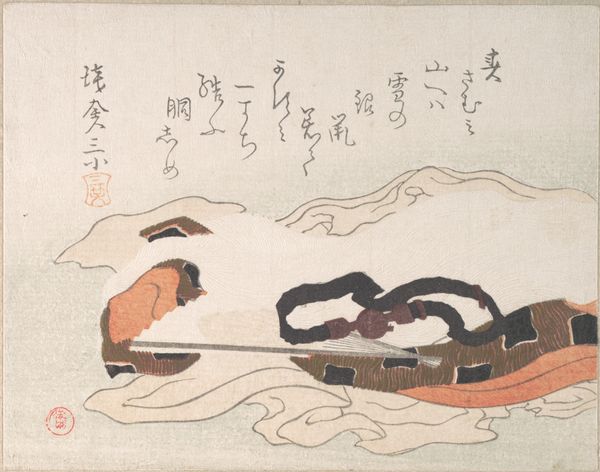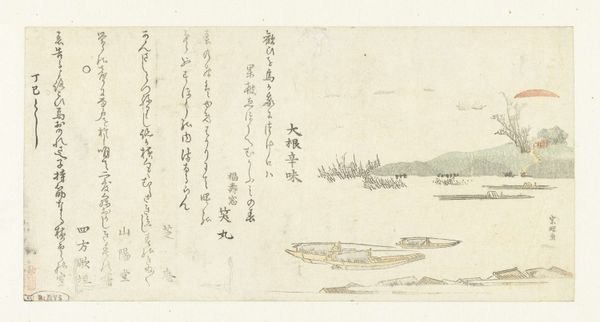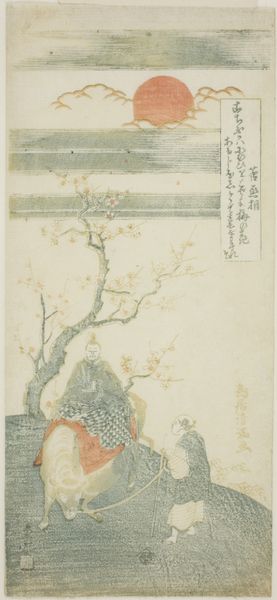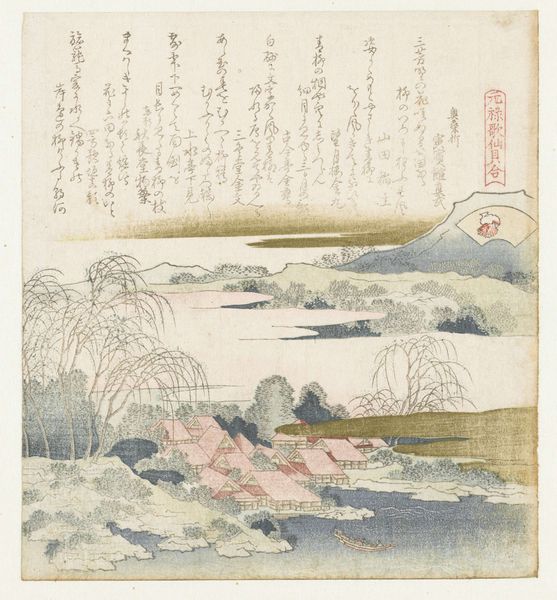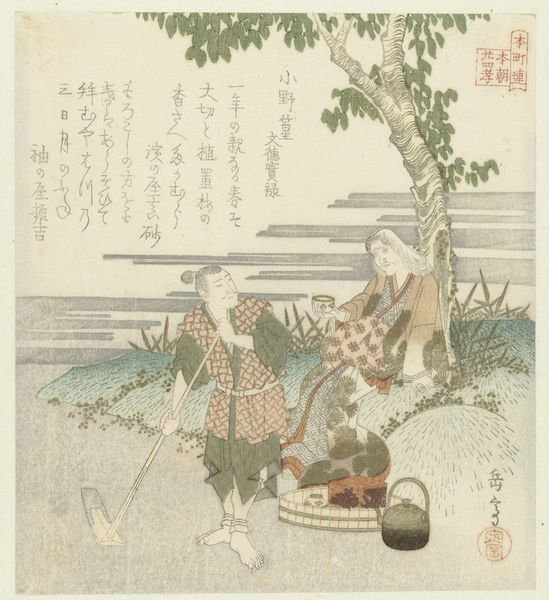
# print
#
asian-art
#
landscape
#
ukiyo-e
#
figuration
Dimensions: height 203 mm, width 173 mm
Copyright: Rijks Museum: Open Domain
Editor: This is "Vrouw in een boot," a print from circa 1830-1835 by an anonymous artist. It has such a serene quality. The figure in the boat seems so self-contained. What layers do you see in this ukiyo-e print? Curator: What strikes me is the quiet resistance embedded within this seemingly tranquil image. Consider the role of women in Edo-period Japan and the limited mobility afforded to them. What could it signify? Editor: Perhaps a form of escapism? A journey of self-discovery, even if contained within the confines of the print? Curator: Exactly! And think about the poetry inscribed at the top. Ukiyo-e often functioned as a space where social commentary could be subtly interwoven. What could the choice to depict a woman alone in nature suggest about female agency during this period? Is it truly serene or perhaps a little defiant? Editor: I hadn't considered it that way. Seeing it as a quiet act of rebellion, framed within societal constraints. Curator: Right! The artistic composition – the placement of the figure, the landscape, even the calligraphy – works to communicate subtle resistance. Do you think this offers us a view on societal pressures? Editor: Yes, I'm starting to think about how beauty, social context, and acts of defiance can converge within a single work. Curator: Absolutely, the image highlights the inherent tensions and contradictions present within that era. The interplay between art, resistance, and social realities makes it particularly resonant today. Editor: It's fascinating how an artwork that appears so peaceful on the surface can be interpreted in such a complex and thought-provoking way. Thanks for the new perspectives.
Comments
No comments
Be the first to comment and join the conversation on the ultimate creative platform.

